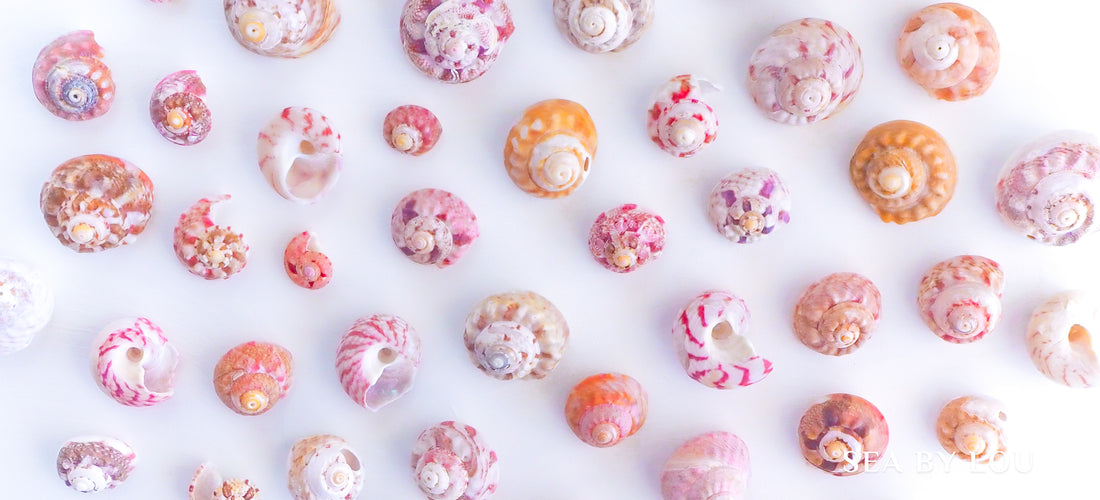
Gibbula Magus || Magus Topshell || Turban Topshell
Share
- Size: 10 to 35 millimeters
- Color: Pink, white, yellow, brown, orange, grey, reddish
- Family: Trochidae
- Fun fact: Gibbula magus is sometimes used as a bioindicator species
Gibbula Magus Shell is a beautiful sea snail shell that can be found in the eastern Atlantic Ocean and Mediterranean Sea. Gibbula Magus Shell are relatively small but very colorful, which makes them a true piece of art to find.
Most of the Gibbula Magus Shells that I find in Portugal are rich in colors like pink and reddish with zigzag lines.

Aesthetics
Gibbula Magus Shells are highly variable in coloration and pattern. It is showing some different combinations of colors like brown, red, pink, yellow, grey and white hues. The base of the shell is luminously zigzag-striped.

Gibbula Magus Shell is conical in shape, with a pointed apex and a rounded base. The height of the shell ranges typically from 10 to 20 millimeters. The shell has several whorls and the surface is smooth with fine, spiral grooves.
The shell of Gibbula Magus grows in a spiral pattern as the snail grows bigger. However, unlike some other snails, the spiral is not tightly coiled, giving the shell a more open and spacious appearance. This makes it easier to appreciate the intricate details of the shell's surface and texture.
One of the things that makes Gibbula Magus Shells so interesting is their variation. No two shells are exactly alike, and the colors and patterns can vary widely even within the same population. This makes collecting Gibbula Magus Shells exciting for shell lovers who appreciate the beauty and diversity of nature.
The name "Gibbula" comes from the Latin word "gibbus," which means "hump" or "bump," and refers to the slightly convex shape of the shell.

Bioindicator species
Gibbula Magus typically lives in shallow waters, between the intertidal zone and a depth of about 50 meters, on rocky or sandy substrates.
Gibbula Magus are sometimes used as a bioindicator species, because the snails are herbivorous and feed on algae and other plant material. Their presence or absence in a particular habitat can provide information about the overall health and condition of that environment.
This makes them an important species for researchers and conservationists who are studying the impacts of environmental change on marine ecosystems.
Whether you're a seashell collector or just admiring the colors, Gibbula Magus Shell is sure to captivate your imagination and inspire your love for the ocean.
Interested in piece with the beautiful Gibbula Magus Shells? Go to the shop or fill in the contact form to get more information about customized options.
<<<>>>

